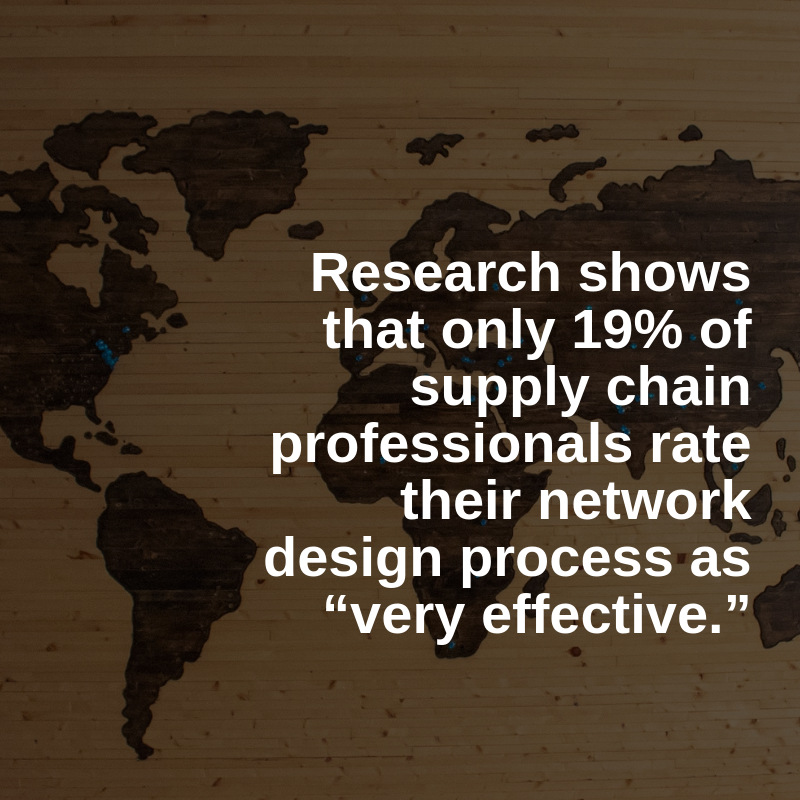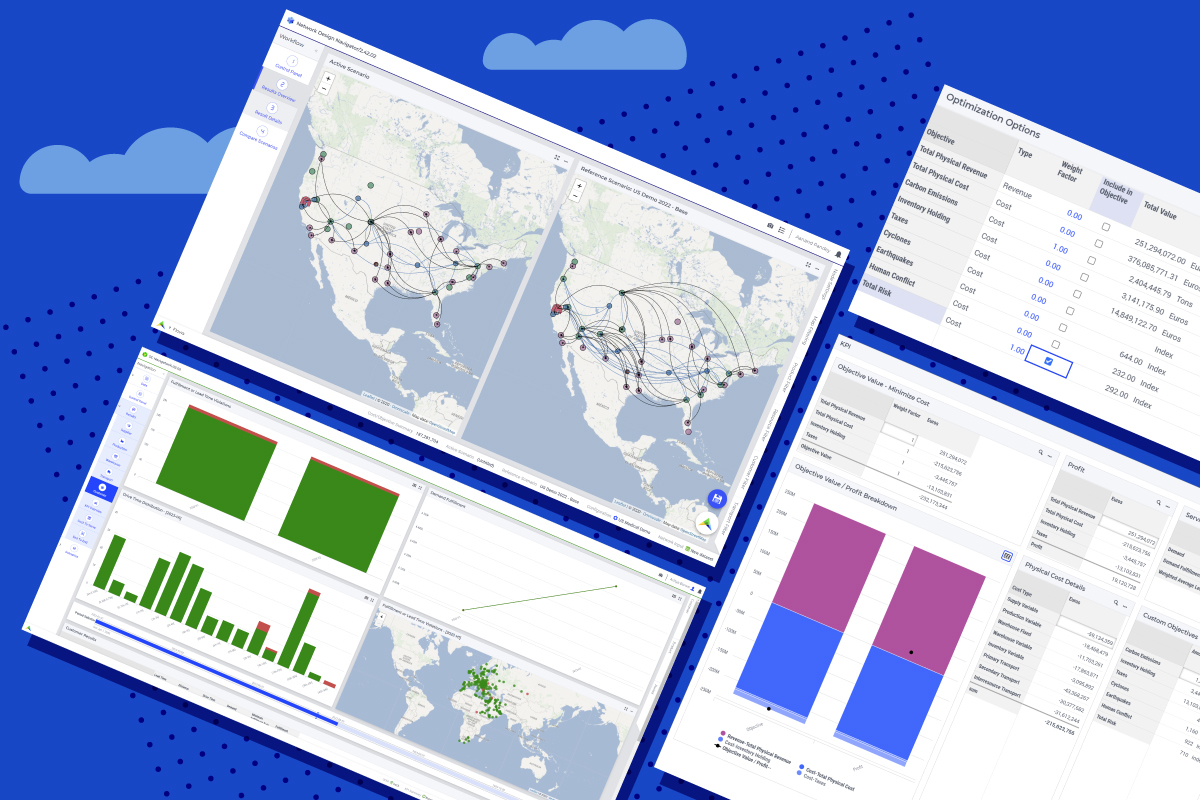Overcoming the Top 5 Barriers for Supply Chain Network Design Adoption
 You have tough decisions to make about your supply chain network design. You need answers to urgent network questions, but it often takes several weeks to get the answers you need. When you finally have the analysis, everything’s changed, and the results are no longer relevant. Perhaps the only good thing about this is that you’re not alone. About 38% of supply chain professionals say it takes weeks and 18% say it takes months to get the answers they need. Only 13% get crucial answers within hours. How can you build a capability in-house to get the answers you need in a timely way? We recently hosted a webinar on this topic, sharing insights to help you overcome the top 5 setbacks that affect organizations.
You have tough decisions to make about your supply chain network design. You need answers to urgent network questions, but it often takes several weeks to get the answers you need. When you finally have the analysis, everything’s changed, and the results are no longer relevant. Perhaps the only good thing about this is that you’re not alone. About 38% of supply chain professionals say it takes weeks and 18% say it takes months to get the answers they need. Only 13% get crucial answers within hours. How can you build a capability in-house to get the answers you need in a timely way? We recently hosted a webinar on this topic, sharing insights to help you overcome the top 5 setbacks that affect organizations.
What are the top 5 barriers to supply chain network design adoption?
Recent research shows that only 19% of supply chain professionals rate their network design process as “very effective.” The following obstacles bog companies down:
- Poor data quality: 53% of respondents in a Supply Chain Insights survey cited this as a top challenge.
- Lack of skilled resources: 30% of professionals struggle to find the right talent for their network design efforts.
- Tools that are too complex or expensive: 27% say they do not have the right tools and while 84% of professionals say that they want an affordable solution only 54% of them think the technology available meets their price expectations.
- Lengthy time to plan/execute: a quarter of professionals surveyed complain that it takes too long to execute on network design efforts.
- Lack of upper management support: 18% report a lack of support from their management.
Those who don’t have a process in place cite similar issues for not adopting supply chain network design. More than half (58%) say they don’t have the right resources in house, 35% say they don’t have upper management support and 27% say their data quality is too low.
Recent research shows that only 19% of supply chain professionals rate their network design process as very effective. – Tweet this
How do you overcome these issues?
As AIMMS’ Brian Dooley and Paul van Nierop explain, some of the issues can be addressed by using the right technology. Not all tools are equally data-hungry and some are easier to use than others. The problem is that the vast majority of professionals primarily rely on spreadsheets. This leaves companies with a network design process that is periodic or done on a project basis, not as part of ongoing decision-support.
Easy to use technology that requires a minimum amount data to help you get started quickly can make a world of difference. The technology should also allow for model changes on the fly to help you adapt to changing business conditions. Powerful visualizations also help to facilitate conversations and involve executives at the decision table.
Watch our webinar on demand to find out how you can overcome these issues with our scenario analysis and optimization tool.





